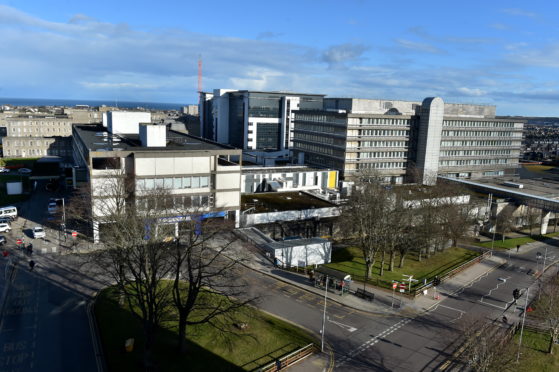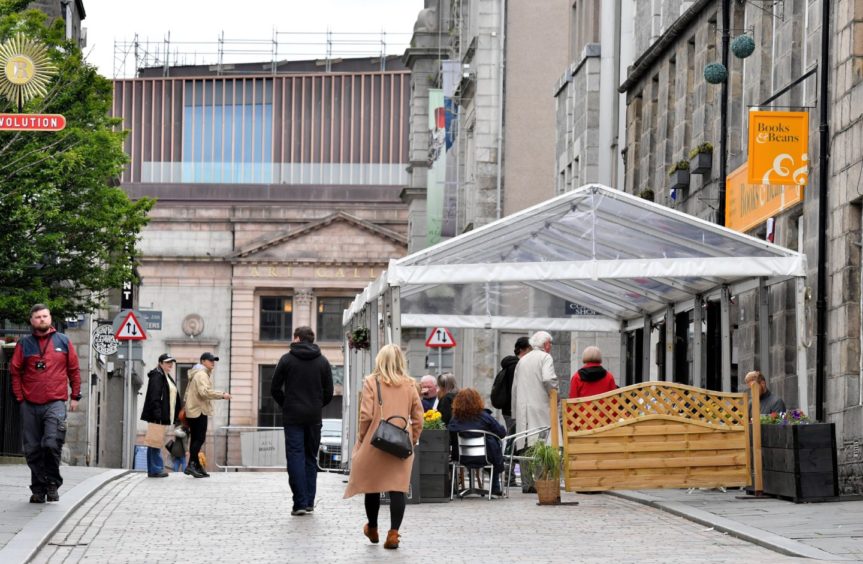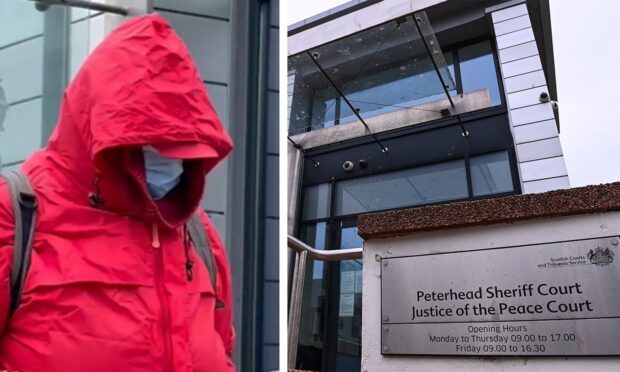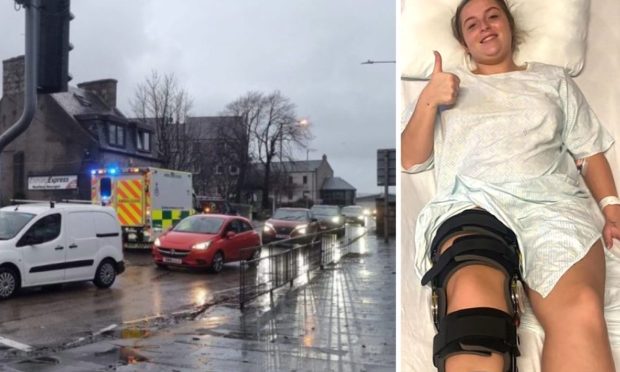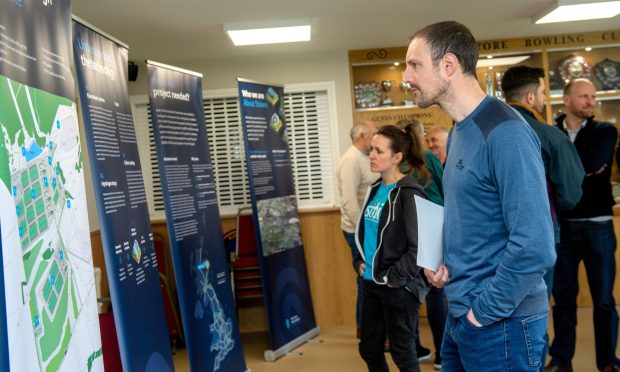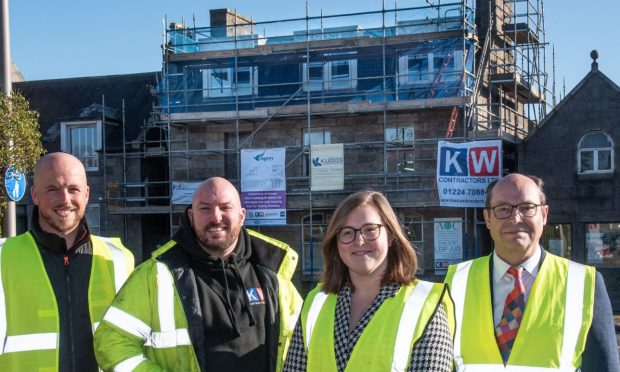A health board has published its plans for managing a Covid-19 outbreak across the north-east.
NHS Grampian said the plans were in development prior to the outbreak linked to the hospitality trade in Aberdeen.
Health chiefs have been informed by initial lessons learned in the management of that.
The plans have been developed jointly with local authority partners in Grampian.
Susan Webb, director of public health for NHS Grampian, said: “The public health team in NHS Grampian has tried and tested approaches for dealing with outbreaks –thankfully not usually on the scale of Covid-19.
“Many individuals have asked us about our processes and so we have produced these plans to provide information to our partners and the public on how we can all prevent the spread of the virus and what we will do in collaboration with our partners if we do get a case.
“We know that for some this is a concerning time and hope these documents provide reassurance that we are working hard with our partners to keep our population safe.
“While there is much in common between the three plans, there are also subtle differences which reflect the potential challenges of managing outbreaks in both urban and rural settings.
“A significant amount of work has gone into the development of the plan and I want to thank everyone who participated in that.”
The outbreak in Aberdeen provided an opportunity to test the various parts of the plans.
The response to the cluster of cases has highlighted the working relationship between the public health and local authority environmental health teams.
It has also demonstrated the strength of the Test and Protect programme in Grampian.
The contact tracing team rapidly interviewed all detected cases, identified their close contacts, and provided guidance on self-isolation.
NHS Grampian said at the peak of the outbreak, the majority of cases were assigned, interviewed and completed between 24 to 48 hours.
Chris Littlejohn, deputy director of public health, said: “The performance of our teams during the outbreak has been simply phenomenal.
“We owe a huge debt of gratitude to them for their efforts.
“The best way we can all repay this, is to play our part in preventing another outbreak, in Aberdeen or indeed anywhere else in Grampian.
“These cases demonstrated that Covid-19 is still out there and can spread very quickly if given the opportunity.
“Our message is clear: keep your distance. Observing a two-metre distance from people you do not share a home with will help stop this virus in its tracks.
“This has to apply at work, when meeting other households, at the supermarket – everywhere. If you do develop symptoms of Covid-19, however mild, isolate at home and arrange a test.”
The plan is structured around eight themes and will not operate in isolation – instead the listed themes are all interconnected and will evolve over time.
Data and Surveillance
Theme one will ensure access to the right local data to enable the other seven themes and prevent outbreaks.
What NHS Grampian has done so far:
The public health surveillance effort has involved a collaboration with healthboards, Integration Joint Boards, local councils, Public Health Scotland and the Aberdeen Centre for Health Data Science. Early in the pandemic health chiefs combined data from multiple sources which allowed it to:
- Model the potential effects of the pandemic to inform care planning.
- Keep vigilant about community activity using local, national and public data.
- Monitor Covid-19 testing across the country.
- Maintain a registry to support shielded and vulnerable people.
- Provide ‘real time’ data for acute care in hospital.
- Monitor the social, economic, and environmental impact on the city and its people.
- Develop planning intelligence for the next phases of the pandemic and recovery.
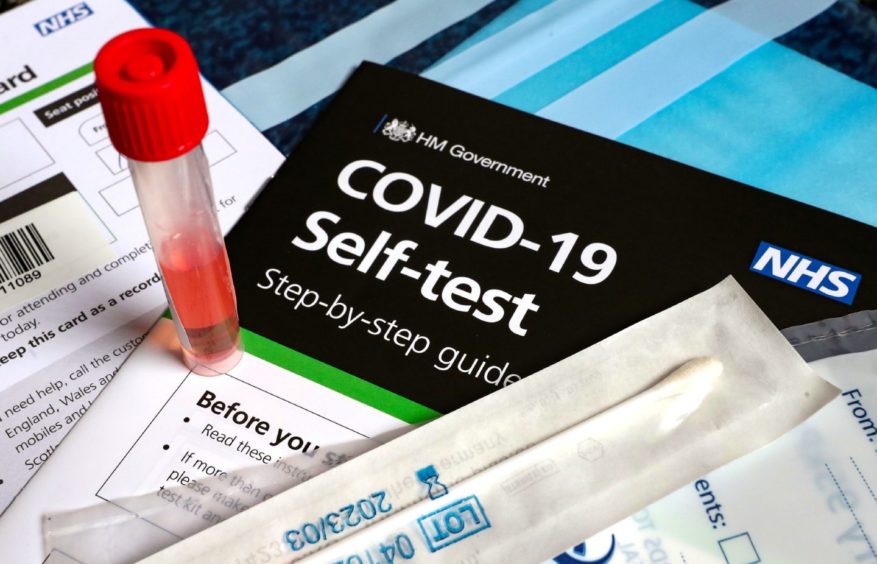 What NHS Grampian sets out to do:
What NHS Grampian sets out to do:
- As part of a national modelling network we are preparing for a range of possible scenarios to manage health and care during winter.
- We have created a Grampian surveillance network with councils and environmental health which has strengthened our capacity and analytical experience to respond to outbreaks and to support recovery.
- We have developed early warning analytics across the health system to help us prepare for increased demand and to mobilise quickly when needed.
- By developing accessible intelligence at a locality level, we are building a better understanding of communities, settings and places that are most at risk of Covid-19 and related inequality.
Cluster and Outbreak Management
Theme two centres on coordinating arrangements to prevent the spread of Covid-19 and proactively managing outbreaks.
This will be achieved by:
- Deploying incident management where NHS Grampian’s Public Health Team is responsible for the management of local incidents. This is usually delegated to the Health Protection Team and appropriate partners.
- The Health Protection Team investigate cases, clusters and outbreaks and undertakes rapid information gathering and risk assessment to decide what multi-professional/agency response should be convened.
- In some circumstances where it may be unclear if there is a threat to public health, a Problem Assessment Group (PAG) will be convened to undertake an initial investigation and assess whether there is a problem.
- The Incident Management Team (IMT) will be called when there is a confirmed problem. It is an independent group with responsibility for investigating and managing the incident.
- Where data suggests that there is a local outbreak, the IMT will follow protocol about communication which may require to disclose details of affected premises and/or workplaces.
- Levels of incidents will be demonstrated on a range from 1 to 5 with increasing seriousness from local to national level incidents.
- Level 1 represents minimal response due to limited local pact, while Level 5 is labelled as Catastrophic impact, and it is most likely a national level incident requiring local and central population-wide national scale interventions.
Prevention and Precautions – care homes
The third theme will work to ensure outbreaks are prevented and managed effectively in care homes.
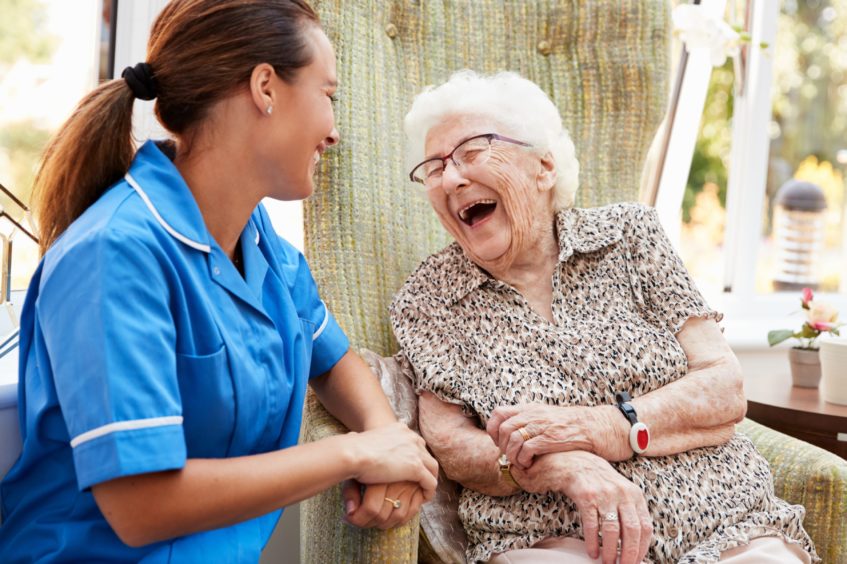 What NHS Grampian has done so far:
What NHS Grampian has done so far:
- Established daily oversight meetings involving Aberdeen City Health and Social Care Partnership, NHS Grampian Public Health and the Care Inspectorate to ensure care homes receive the support they need in a timely manner from the most appropriate agency.
- Redeployed additional staff from other roles to support key activities in care homes such as assistance at mealtimes.
- Introduced routine weekly testing for care home staff.
- Providing testing for care home residents, both for those displaying symptoms and as part of a routine surveillance programme to monitor the prevalence of Covid-19.
- Established PPE hubs to provide emergency PPE supplies as required.
- Built upon existing relationships between care homes and the NHS Grampian Health Protection Team, to provide guidance and support in relation to infection prevention and control.
- Made training developed by Bon Accord Care available to all care home providers.
What NHS Grampian sets out to do:
- Continue prevention and containment of Covid-19 in care homes.
- Review admission pathways to minimise the possibility of the virus entering care homes.
- Further develop specific guidance for managing the virus for those residents living with dementia.
- Further develop multi-disciplinary, supportive approaches and shared clinical decision- making to assist care homes in maintaining the delivery of palliative and end of life care.
- Maintain situational awareness and respond rapidly to changes becoming apparent through routine surveillance.
- Maintain planning arrangements to support additional staff being deployed into care if and when the need arises.
- Improve engagement and communication with residents and their families relating to actions we may have to take at short notice, particularly in relation to meeting winter pressures especially if combined with normal winter flu.
Prevention and Precautions – educational settings
Theme four focuses on preventing and managing outbreaks in educational settings, taking a proactive approach wherever possible.
What NHS Grampian has done so far:
The Education Authority has undertaken a comprehensive Covid-19 risk assessment in government and public health guidance which has led to:
- Enhanced cleaning arrangements and a focus on hand hygiene.
- Rethinking the school day to reduce the number of children gathering at one time.
- Making greater use of outdoor spaces and improving the ventilation of buildings.
- Consideration of the layout and use of spaces to promote physical distancing.
- Restricting entry and movement between education settings.
- Consideration of business continuity planning to cope with staff impacted by Test and Protect.
- Individual planning for those who are more vulnerable or anxious.
- Arrangements to provide data to inform national and local surveillance systems.
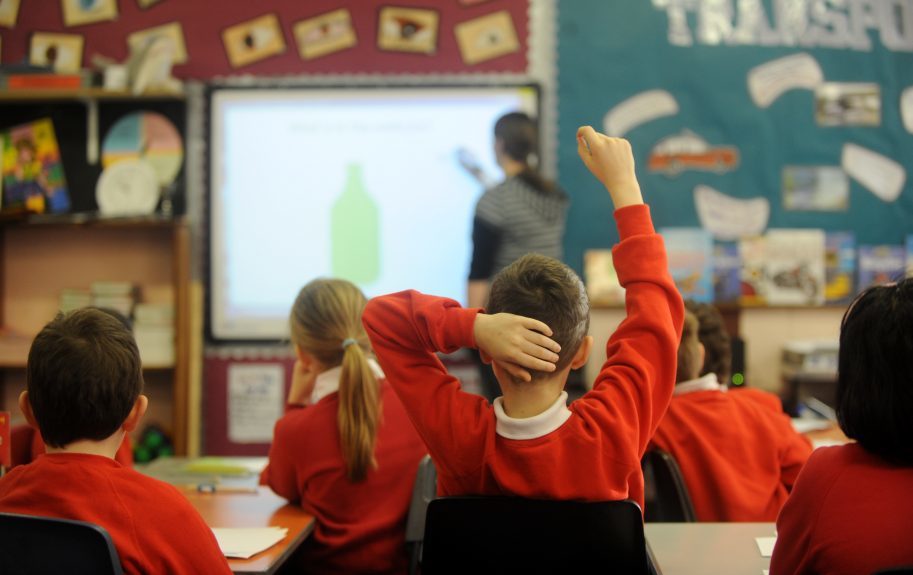 What NHS Grampian sets out to do:
What NHS Grampian sets out to do:
- Carefully monitor the surveillance data so that we Covid-19 and learn from best practice.
- Explore potential scenarios with education leaders and business continuity plans. Administer the Transitional Support Fund to reduce Early Learning and Childcare.
- Keep arrangements under review and adapt in keeping guidance.
- A surveillance programme is being developed for data will identify symptoms and infections in the reporting of incidences of infection and inform schools. If there is evidence of an outbreak in a steps to take. This may include advising Aberdeen deliver the aims of this plan.
Prevention and Precautions – high risk places, locations and communities of interest
Theme five focuses on preventing and managing outbreaks in high-risk locations, workplaces and communities. This means helping to keep as many services and businesses as possible operating in a way that is safe and supports the recovery of our local economy.
What NHS Grampian has done so far:
- Aberdeen City Council and Aberdeen City Health together to put in place streamlined support and those who were asked to shield.
- Contributed to Aberdeen Together and the Grampian support and assistance to those in need including coordinating volunteering requests.
- Supported the Spaces for People initiative to create them to better physically distance while walking.
- Supported the enforcement of the lock down restrictions reopening.
What NHS Grampian sets out to do:
- Continue to proactively engage and prioritise ongoing support for high risk settings based on risk and vulnerability.
- Continue to work together to respond, investigate and control outbreaks or clusters of cases.
- Continue collaboration with partners including the local authority, Police Scotland and HSE to support places to be compliant with legislation.
- Continue with a 4Es approach to enforcement (Engagement, Education, Encouragement and Enforcement) with enforcement only being utilised when other methods have failed to achieve the necessary outcome.
- Embed the community supports that have been put in place into Business as Usual that can respond to changes in demand as we continue to live with Covid-19.
- Working with the local council and other partners, provide advice and support to businesses.
Detection – Test and Protect
Detection is the sixth theme. Test and Protect is a national strategy aimed at managing the spread of Covid-19 by quickly identifying cases of the virus and breaking the chains of transmission. Using local and national testing capacity to best meet current and potential demand for contact tracing and outbreak management.
What NHS Grampian has done so far:
- Introduced testing for all Health and Social Care staff working in Aberdeen City who display symptoms.
- Introduced weekly testing for all care home staff, even if they are showing no symptoms.
- Implemented a routine surveillance testing programme for care home residents who are showing no symptoms to help understand the prevalence of COVID-19 in community settings.
- Commenced testing for hospital patients to help reduce risk of transmission.
- Introduced weekly testing for all hospital staff working with key vulnerable groups (Specialist Cancer services, Long Stay Care of the Elderly and Long Stay Old Age Psychiatry and Learning Disability Wards).
- Identified with Aberdeen City Council all local authority staff supporting critical services, including schools.
What NHS Grampian sets out to do:
- Ensure testing is available to those who require it, responding to changes in Government guidance and best practice.
The new measures make it mandatory for restaurants, cafes, bars, pubs and hotels in which food or drink are sold for consumption on the premises, to take measures to obtain and record visitor information, record visitor information in a filing system suitable for recording, storing and retrieving such information and retain visitor information for at least 21 days from the date of the visit .
What NHS Grampian has done so far:
- Established a local contact tracing team that works alongside the National Contact Tracing Centre.
- Worked with partners across Aberdeen City including NHS Grampian and other partner organisations to agree pathways of support for individuals that will find it difficult to self-isolate.
- Provided public communications to highlight the key messages of Test and Protect to ensure it is widely recognised.
What NHS Grampian sets out to do:
- Continue to ensure our contact tracing service is robust to cope with spikes in demand.
- Monitor information that we gather from confirmed cases and close contacts to identify outbreaks and clusters.
Care for People
Theme seven will focus on supporting vulnerable people to stay safe and get help with self-isolate. This also means ensuring services meet the needs of diverse local communities.
What NHS Grampian has done so far:
- Supported the establishment of a dedicated crisis support phone line to support people who are shielding or non-shielding.
- Co-ordinated joint work across the system of health, adult social care and local authority services to ensure robust access to advice, guidance and support.
- Embedded robust monitoring to understand and address local need and requirements of residents. This has allowed for focused support and communications to specific communities and individuals where risk is considered higher or where need is greater.
- Established flexible staffing capacity to support and assist those in need linked to ebbs and flows in demand.
- Trained staff to provide support to relevant people to allow them to self-isolate and access services to meet their individual needs, which includes volunteer support, assistance with debt and benefit advice, a listening ear and support for mental health or loneliness.
- Provided alternative housing options to support those experiencing homelessness or domestic abuse.
- Facilitated the role out of devices and digital connectivity supporting those who are at highest risk and who are not currently digitally connected. This is being achieved in conjunction with a range of community partners.
- Developed and improved links with people in our communities who are willing and able to provide support in a range of different ways to those in need.
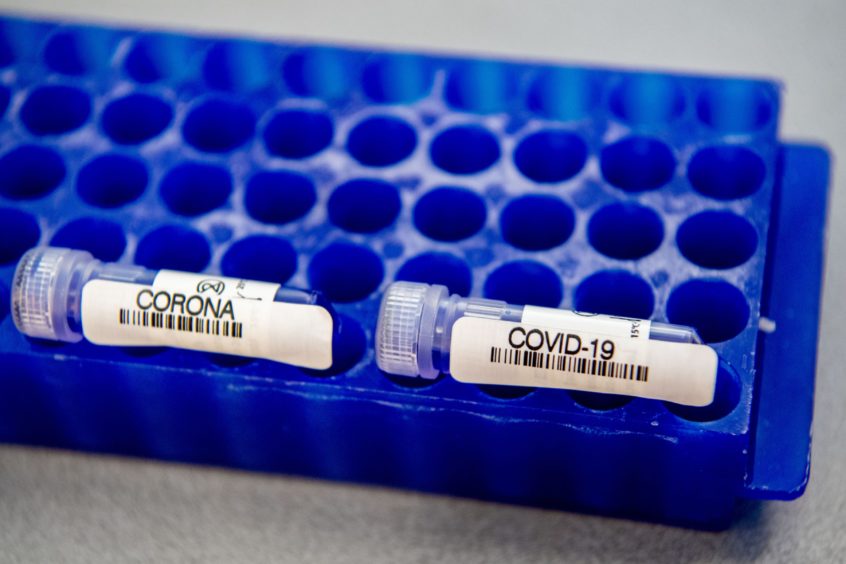 What NHS Grampian sets out to do:
What NHS Grampian sets out to do:
- Maintain and increase integrated work across health, adult social care and local authority services to promote community resilience and ensure residents have access to the right advice and support when needed.
- Use local data and intelligence to target specific locations and communities who have a greater need for support and assistance due to pre-Covid-19 social economic factors, the long term impact of lockdown and the immediate need which may result from further local outbreaks.
- Continue to work with community and voluntary sector partners to assist in to coordinate the offer and support residents.
- Ensure that communications and information is always available, clear, and accessible, in whatever language or format is required.
- Develop the existing dedicated phone line to continue to receive referrals for shopping, food or specialist services as required, supporting residents to self-isolate, shield and support themselves to remain safe and well.
- Develop an integrated access point for citizens to ensure Aberdeen City citizens are directed to the right support at the right time, ensuring early and preventative support diverting from statutory services where appropriate.
Local Governance
The last, and eighth, theme centres on taking local actions to contain outbreaks and community effectively and in a timely, accessible manner with the general public.
What NHS Grampian has done so far:
- Activated emergency plans, monitored, and reviewed likelihood and impact of Covid-19 related risks through horizon scanning and existing data, activated business continuity plans.
- Built on already established city and regional multi-agency partnerships to strengthen shared leadership during the initial response phase to the infection enabling swift and effective decision making.
- Established new multi-agency working groups as appropriate to facilitate data sharing and informed decision making.
- Through the Local Resilience Partnership, established a Humanitarian Assistance Centre to support anyone assisted by the virus.
What NHS Grampian sets out to do:
- Contribute to the city region’s recovery from the pandemic through participation in the Grampian Strategic Oversight Recovery Group.
- Contributed to the necessary changes to our city centre through the Urban Realm Governance Group.
- Established a multi-agency Public Health Surveillance Network to monitor the impact of Covid-19 on our city and to inform future decisions require to deliver the aims of this plan.
- Establish a Public Health Business Stakeholders group to ensure that our city’s key stakeholders participate and contribute to the decisions required to build back our city whilst keeping our residents safe.
